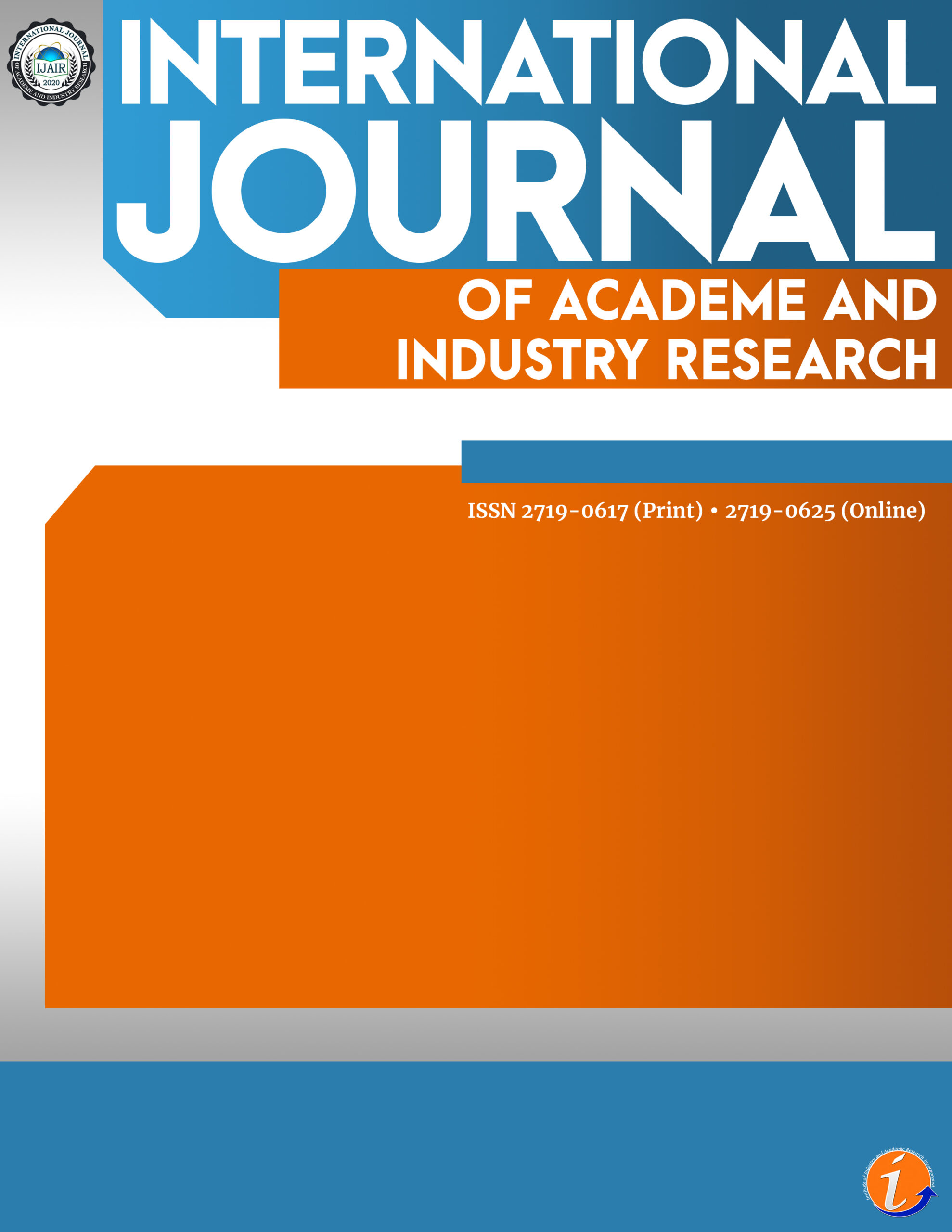Social media influencers are popular marketing partners, requiring the focus of brands to enhance the purchase intention. The majority of brands are passionate to collaborate with favorable social media influencers but lack the understanding to maintain followers' attitude. These circumstances could jeopardize the reputation of brands, leading to a waste of investment. Therefore, this cross-sectional study aimed to examine the effect of credible sources and advertising content (stimuli) on purchase intention (response), mediated by followers' attitude toward social media influencers (organisms). A quantitative study design with purposive sampling was used to select 291 respondents living in Indonesia. The respondents were active social media users and followers of influencers. An online survey questionnaire was distributed through WhatsApp. Partial Least Squares-Structural Equation Modelling (PLS-SEM) was applied for data analysis. The results showed that credible social media influencers as source of information and entertainment are the main reason for followers to show a positive attitude towards themselves leading to intention to purchase product. Trustworthiness serves as a mandatory element to establish healthy long-term relationships with followers and brands. Those who succeed in maintaining credibility and the ability to share valuable content are the best investment of brands.
SOR framework, followers' attitude, social media influencers, source credibility, advertising value, purchase intention
Dian Natalia. Corresponding author. Graduated from Binus Business School, Jakarta. She is currently assigned as Global- Meeting Group Event Manager in one of the biggest companies for tourism industry. She is an enthusiastic learner and her research interest in Digital Marketing as well as Human Resources Management. Email: dian.natalia001@binus.ac.id
Sevenpri Candra. Presently a professor in Business and Management and Deputy Campus Director (Academic and Student Development) at Binus University Bekasi, Indonesia. His research interest is in Digital Business and Management. Prior to joining Binus, he spent years as a professional in Consulting Business and Information Technology. This allow him to be an expert in Management, Business Development, Marketing and Strategy. Email: seven@binus.ac.id
“All authors equally contributed to the conception, design, preparation, data gathering and analysis, and writing of the manuscript. All authors read and approved the final manuscript.”
No potential conflict of interest was reported by the author(s).
This work was not supported by any funding.
This study was conducted in accordance with the ethical guidelines of Binus Business School. The conduct of this study has been approved and given relative clearance(s) by Binus Business School.
AI tools were not used in writing this paper.
Abbasi, A. Z., Rehman, U., Hussain, A., Ting, D. H., & Islam, J. U. (2021). The impact of advertising value of in-game pop-up ads in online gaming on gamers’ inspiration: An empirical investigation. Telematics and Informatics, 62, 101630. https://doi.org/10.1016/j.tele.2021.101630
Acikgoz, F., & Burnaz, S. (2021). The influence of “influencer marketing” on YouTube influencers. International Journal of Internet Marketing and Advertising, 15(2), 201. https://doi.org/10.1504/IJIMA.2021.114331
Agrawal, A. J. (n.d.). Why influencer marketing will explode in 2017. Forbes. https://www.forbes.com/sites/ajagrawal/2016/12/27/why-influencer-marketing-will-explode-in-2017/
Ajzen, I. (1991). The theory of planned behavior. Organizational Behavior and Human Decision Processes, 50(2), 179–211.
Alboqami, H. (2023). Trust me, I’m an influencer! – Causal recipes for customer trust in artificial intelligence influencers in the retail industry. Journal of Retailing and Consumer Services, 72. https://doi.org/10.1016/j.jretconser.2022.103242
AlFarraj, O., Alalwan, A. A., Obeidat, Z. M., Baabdullah, A., Aldmour, R., & Al- Haddad, S. (2021). Examining the impact of influencers’ credibility dimensions: Attractiveness, trustworthiness and expertise on the purchase intention in the aesthetic dermatology industry. Review of International Business and Strategy, 31(3), 355–374. https://doi.org/10.1108/RIBS-07-2020-0089
Arora, A., Bansal, S., Kandpal, C., Aswani, R., & Dwivedi, Y. (2019). Measuring social media influencer index- insights from facebook, Twitter and Instagram. Journal of Retailing and Consumer Services, 49, 86–101. https://doi.org/10.1016/j.jretconser.2019.03.012
Arora, T., & Agarwal, B. (2019). Empirical study on perceived value and attitude of millennials towards social media advertising: A structural equation modelling approach. Vision: The Journal of Business Perspective, 23(1), 56– 69. https://doi.org/10.1177/0972262918821248
Bagozzi, R. P. (1986). Principles of marketing management: Science Research Associates Chicago.
Bagozzi, R. P., & Yi, Y. (1988). On the evaluation of structural equation models. Journal of the Academy of Marketing Science, 16(1), 74–94. https://doi.org/10.1007/BF02723327
Bakar, N., & Musa, R. (2020). Hypothesising the effect of social media influencer roles, credibility and advertising values on attitude and brand love. Malaysian Journal of Consumer and Family Economics, 24(1), 39–51.
Balaban, D., & Mustățea, M. (2019). Users’ perspective on the credibility of social media influencers in Romania and Germany. Romanian Journal of Communication and Public Relations, 21(1), 31. https://doi.org/10.21018/rjcpr.2019.1.269
Belanche, D., Casaló, L. V., Flavián, M., & Ibáñez-Sánchez, S. (2021). Building influencers’ credibility on Instagram: Effects on followers’ attitudes and behavioral responses toward the influencer. Journal of Retailing and Consumer Services, 61, 102585. https://doi.org/10.1016/j.jretconser.2021.102585
Bianchi, C., Andrews, L., Wiese, M., & Fazal-E-Hasan, S. (2017). Consumer intentions to engage in s-commerce: A cross-national study. Journal of Marketing Management, 1–31. https://doi.org/10.1080/0267257X.2017.1319406
Breves, P. L., Liebers, N., Abt, M., & Kunze, A. (2019). The perceived fit between Instagram influencers and the endorsed brand: How influencer–brand fit affects source credibility and persuasive effectiveness. Journal of Advertising Research, 59(4), 440–454. https://doi.org/10.2501/JAR-2019-030
Chetioui, Y., Benlafqih, H., & Lebdaoui, H. (2020). How fashion influencers contribute to consumers’ purchase intention. Journal of Fashion Marketing and Management: An International Journal, 24(3), 361–380. https://doi.org/10.1108/JFMM-08-2019-0157
Chetioui, Y., Butt, I., Fathani, A., & Lebdaoui, H. (2022). Organic food and Instagram health and wellbeing influencers: An emerging country’s perspective with gender as a moderator. British Food Journal, ahead-of-print.
Chin, W. W. (1998). The partial least squares approach to structural equation modeling. Modern Methods for Business Research, 295(2), 295–336.
Chopra, A., Avhad, V., & Jaju, and S. (2021). Influencer marketing: An exploratory study to identify antecedents of consumer behavior of millennial. Business Perspectives and Research, 9(1), 77–91. https://doi.org/10.1177/2278533720923486
Coates, A. E., Hardman, C. A., Halford, J. C. G., Christiansen, P., & Boyland, E. J. (2020). “It’s just addictive people that make addictive videos”: Children’s understanding of and attitudes towards influencer marketing of food and beverages by YouTube video bloggers. International Journal of Environmental Research and Public Health, 17(2), 449. https://doi.org/10.3390/ijerph17020449
Cuesta-Valiño, P., Rodríguez, P. G., & Núñez-Barriopedro, E. (2020). Perception of advertisements for healthy food on social media: Effect of attitude on consumers’ response. International Journal of Environmental Research and Public Health, 17(18), 6463. https://doi.org/10.3390/ijerph17186463
Delbaere, M., Michael, B., & Phillips, B. J. (2021). Social media influencers: A route to brand engagement for their followers. Psychology & Marketing, 38(1), 101– 112. https://doi.org/10.1002/mar.21419
Djafarova, E., & Rushworth, C. (2017). Exploring the credibility of online celebrities’ Instagram profiles in influencing the purchase decisions of young female users. Computers in Human Behavior, 68, 1–7. https://doi.org/10.1016/j.chb.2016.11.009
Ducoffe, R. H. (1995). How consumers assess the value of advertising. Journal of Current Issues & Research in Advertising, 17(1), 1–18. https://doi.org/10.1080/10641734.1995.10505022
Efendioğlu, İ. H., & Durmaz, Y. (2022). The impact of perceptions of social media advertisements on advertising value, brand awareness and brand associations: Research on Generation Y Instagram users. Transnational Marketing Journal, 10(2), 251–275. https://doi.org/10.33182/tmj.v10i2.1606
Eroglu, S. A., Machleit, K. A., & Davis, L. M. (2001). Atmospheric qualities of online retailing A conceptual model and implications. Journal of Business Research, 54(2), 177-184. https://doi.org/10.1016/S0148-2963(99)00087-9
Falcão, J., & Isaías, P. (2020). Perceptions and attitude toward advertising on social networks and search engines: A comparative analysis. Journal of Internet Commerce, 19(4), 404–436. https://doi.org/10.1080/15332861.2020.1816325
Fornell, C., & Larcker, D. F. (1981). Evaluating structural equation models with unobservable variables and measurement error. Journal of Marketing Research, 18(1), 39-50. https://doi.org/10.2307/3151312
Gaber, H. R., Wright, L. T., & Kooli, K. (2019). Consumer attitudes towards Instagram advertisements in Egypt: The role of the perceived advertising value and personalization. Cogent Business & Management, 6(1), 1618431. https://doi.org/10.1080/23311975.2019.1618431
Giffin, K. (1967). The contribution of studies of source credibility to a theory of interpersonal trust in the communication process. Psychological Bulletin, 68, 104–120. https://doi.org/10.1037/h0024833
Guo, Y., Zhang, K., & Wang, C. (2022). Way to success: Understanding top streamer’s popularity and influence from the perspective of source characteristics. Journal of Retailing and Consumer Services, 64, 102786. https://doi.org/10.1016/j.jretconser.2021.102786
Hair, J. F. (Ed.). (2017). A primer on partial least squares structural equation modeling (PLS-SEM) (Second edition). Sage.
Hair, J. F., Ringle, C. M., & Sarstedt, M. (2013). Partial Least Squares Structural Equation Modeling: Rigorous applications, better results and higher acceptance. Long Range Planning, 46(1–2), 1–12. https://doi.org/10.1016/j.lrp.2013.01.001
Hamouda, M. (2018). Understanding social media advertising effect on consumers’ responses: An empirical investigation of tourism advertising on Facebook. Journal of Enterprise Information Management, 31(3), 426–445. https://doi.org/10.1108/JEIM-07-2017-0101
Hashim, N. H., Normalini, & Sajali, N. (2018). The influence factors towards mobile advertising message content on consumer purchase intention. Global Business Review, 19(5), 1187–1206. https://doi.org/10.1177/0972150918788746
Hewei, T. (2022). Factors affecting clothing purchase intention in mobile short video app: Mediation of perceived value and immersion experience. PLOS ONE, 17(9), e0273968. https://doi.org/10.1371/journal.pone.0273968
Hovland, C. I., Janis, I. L., & Kelley, H. H. (1953). Communication and persuasion; psychological studies of opinion change. Yale University Press.
Hovland, C. I., & Weiss, W. (1951). The influence of source credibility on communication effectiveness. The Public Opinion Quarterly, 15(4), 635–650. https://www.jstor.org/stable/2745952
Hughes, C., Swaminathan, V., & Brooks, G. (2019). Driving brand engagement through online social influencers: An empirical investigation of sponsored blogging campaigns. Journal of Marketing, 83(5), 78–96. https://doi.org/10.1177/0022242919854374
Hussain, A., Hooi Ting, D., Zaib Abbasi, A., & Rehman, U. (2023b). Integrating the S-O-R model to examine purchase intention based on Instagram sponsored advertising. Journal of Promotion Management, 29(1), 77–105. https://doi.org/10.1080/10496491.2022.2108185
Hussain, A., Ting, D. H., & Mazhar, M. (2022). Driving consumer value co-creation and purchase intention by social media advertising value. Frontiers in Psychology, 13, 800206. https://doi.org/10.3389/fpsyg.2022.800206
Hwang, K., & Zhang, Q. (2018). Influence of parasocial relationship between digital celebrities and their followers on followers’ purchase and electronic word-of- mouth intentions, and persuasion knowledge. Computers in Human Behavior, 87, 155–173. https://doi.org/10.1016/j.chb.2018.05.029
Jin, S. V., & Ryu, E. (2020). “I’ll buy what she’s #wearing”: The roles of envy toward and parasocial interaction with influencers in Instagram celebrity-based brand endorsement and social commerce. Journal of Retailing and Consumer Services, 55, 102121. https://doi.org/10.1016/j.jretconser.2020.102121
John, S. P., & De’Villiers, R. (2020). Elaboration of marketing communication through visual media: An empirical analysis. Journal of Retailing and Consumer Services, 54, 102052. https://doi.org/10.1016/j.jretconser.2020.102052
Kemouche, N. H., Amalou, W. H., Laboratory, M., & Laboratory, M. (2022). Content Marketing: The influence of content strategies on consumer online engagement behavior. 09(01), 16.
Khadijah, S. fitra. (n.d.). 167 Juta Warga RI Main Medsos, Habiskan Waktu 3 Jam Lebih per Hari. https://teknologi.bisnis.com/read/20230203/84/1624561/167-juta-warga-ri-main-medsos-habiskan-waktu-3-jam-lebih-per-hari
Ki, C. & Kim, Y. (2019). The mechanism by which social media influencers persuade consumers: The role of consumers’ desire to mimic. Psychology & Marketing, 36(10), 905–922. https://doi.org/10.1002/mar.21244
Ki, C., Cuevas, L. M., Chong, S. M., & Lim, H. (2020). Influencer marketing: Social media influencers as human brands attaching to followers and yielding positive marketing results by fulfilling needs. Journal of Retailing and Consumer Services, 55, 102133. https://doi.org/10.1016/j.jretconser.2020.102133
Kim, M. (2020). Determinants of young consumers’ attitude toward mobile advertising: The role of regulatory focus. Journal of Promotion Management, 26(2), 186–206. https://doi.org/10.1080/10496491.2019.1699623
Kim, T., & Read, G. L. (2021). Free smiles are worth a lot for social media influencers: The Mediating roles of warmth, competence, and admiration. Cyberpsychology, Behavior, and Social Networking, 24(2), 135–140. https://doi.org/10.1089/cyber.2020.0323
Koay, K. Y., Cheung, M. L., Soh, P. C.-H., & Teoh, C. W. (2022). Social media influencer marketing: The moderating role of materialism. European Business Review, 34(2), 224–243. https://doi.org/10.1108/EBR-02-2021-0032
Kohli, A. K., & Jaworski, B. J. (1990). Market orientation: The construct, research propositions, and managerial implications. Journal of Marketing, 54(2), 1–18.
Lata, S., & Rana, K. (2021). What are the determinants of consumers’ online reviews adoption for hotel bookings: A structural equation modelling approach. Enlightening Tourism. A Pathmaking Journal, 11(1), 171-193. https://doi.org/10.33776/et.v11i1.5354
Lou, C., & Yuan, S. (2019). Influencer marketing: How message value and credibility affect consumer trust of branded content on social media. Journal of Interactive Advertising, 19(1), 58–73. https://doi.org/10.1080/15252019.2018.1533501
MacKenzie, S. B., & Lutz, R. J. (1989). An empirical examination of the structural antecedents of attitude toward the ad in an advertising pretesting context. Journal of Marketing, 53(2), 48. https://doi.org/10.2307/1251413
Magano, J., Au-Yong-Oliveira, M., Walter, C. E., & Leite, Â. (2022). Attitudes toward fashion influencers as a mediator of purchase intention. Information, 13(6), 297. https://doi.org/10.3390/info13060297
Magno, F. (2017). The influence of cultural blogs on their readers’ cultural product choices. International Journal of Information Management, 37(3), 142–149. https://doi.org/10.1016/j.ijinfomgt.2017.01.007
Mahmut, B., Huseyin, K., Selin, S. F., & Ozlem, A. (2022). Determinants of consumer attitudes towards social media advertising: Evidence from the Turkish Airline Industry. Studies in Business and Economics, 17(1), 5–23. https://doi.org/10.2478/sbe-2022-0001
Martins, J., Costa, C., Oliveira, T., Gonçalves, R., & Branco, F. (2019). How smartphone advertising influences consumers’ purchase intention. Journal of Business Research, 94, 378–387. https://doi.org/10.1016/j.jbusres.2017.12.047
McCroskey, J. C. (1966). Scales for the measurement of ethos.
McGuire, W. J. (1985). The nature of attitudes and attitude change. Handbook of Social Psychology, 2, 233–346.
Mehrabian, A., & Russell, J. A. (1974). An approach to environmental psychology. The MIT Press.
Melumad, S., Inman, J. J., & Pham, M. T. (2019). Selectively emotional: How smartphone use changes user-generated content. Journal of Marketing Research, 56(2), 259–275. https://doi.org/10.1177/0022243718815429
Min, J. H. J., Chang, H. J. J., Jai, T.-M. C., & Ziegler, M. (2019). The effects of celebrity-brand congruence and publicity on consumer attitudes and buying behavior. Fashion and Textiles, 6(1), 10. https://doi.org/10.1186/s40691-018- 0159-8
Miranda, S., Cunha, P., & Duarte, M. (2021). An integrated model of factors affecting consumer attitudes and intentions towards Youtuber-generated product content. Review of Managerial Science, 15(1), 55–73. https://doi.org/10.1007/s11846- 019-00370-3
Muda, M., & Hamzah, M. I. (2021). Should I suggest this YouTube clip? The impact of UGC source credibility on eWOM and purchase intention. Journal of Research in Interactive Marketing, 15(3), 441–459. https://doi.org/10.1108/JRIM-04-2020-0072
Ohanian, R. (1990). Construction and validation of a scale to measure celebrity endorsers’ perceived expertise, trustworthiness, and attractiveness. Journal of Advertising, 19(3), 39–52. https://doi.org/10.1080/00913367.1990.10673191
Othman, N. A., Alamsyah, D. P., & Aryanto, R. (2021). Understanding the factors of green advertising to adopt the environmental strategy. IOP Conference Series: Earth and Environmental Science, 824(1), 012042. https://doi.org/10.1088/1755-1315/824/1/012042
Park, J., & Chun, J. (2020). How does watching YouTube fashion content impact perception of appearance: A phenomenological study of Korean women in Generation Z. Humanities and Social Sciences Communications, 7(1), 161. https://doi.org/10.1057/s41599-020-00652-2
Peng, J., Agarwal, A., Hosanagar, K., & Iyengar, R. (2018). Network overlap and content sharing on social media platforms. Journal of Marketing Research, 55(4), 571–585. https://doi.org/10.1509/jmr.14.0643
Pentina, I., Guilloux, V., & Micu, A. C. (2018). Exploring social media engagement behaviors in the context of luxury brands. Journal of Advertising, 47(1), 55– 69. https://doi.org/10.1080/00913367.2017.1405756
Pick, M. (2021). Psychological ownership in social media influencer marketing. European Business Review, 33(1). https://doi.org/10.1108/EBR-08-2019-0165
Reinikainen, H., Munnukka, J., Maity, D., & Luoma-aho, V. (2020). ‘You really are a great big sister’ – parasocial relationships, credibility, and the moderating role of audience comments in influencer marketing. Journal of Marketing Management, 36(3–4), 279–298. https://doi.org/10.1080/0267257X.2019.1708781
Saima, & Khan, M. A. (2021). Effect of social media influencer marketing on consumers’ purchase intention and the mediating role of credibility. Journal of Promotion Management, 27(4), 503–523. https://doi.org/10.1080/10496491.2020.1851847
SanMiguel, P., Guercini, S., & Sádaba, T. (2019). The impact of attitudes towards influencers amongst millennial fashion buyers. Studies in Communication Sciences, 18(2). https://doi.org/10.24434/j.scoms.2018.02.016
Schouten, A. P., Janssen, L., & Verspaget, M. (2020). Celebrity vs. influencer endorsements in advertising: The role of identification, credibility, and product-endorser fit. International Journal of Advertising, 39(2), 258–281. https://doi.org/10.1080/02650487.2019.1634898
Segovia-Villarreal, M., & Rosa-Díaz, I. M. (2022). Promoting sustainable lifestyle habits: “Real food” and social media in Spain. Foods, 11(2), 224. https://doi.org/10.3390/foods11020224
Sokolova, K., & Kefi, H. (2020). Instagram and YouTube bloggers promote it, why should I buy? How credibility and parasocial interaction influence purchase intentions. Journal of Retailing and Consumer Services, 53, 101742. https://doi.org/10.1016/j.jretconser.2019.01.011
Statista. (2022). Average number of influencers followed by a social media user in Indonesia as of June 2022.
Sun, T., & Huang, T. (2022). Research of glamping tourism based on the aesthetics of atmosphere. Sustainability, 15(1), 581. https://doi.org/10.3390/su15010581
Taillon, B. J., Mueller, S. M., Kowalczyk, C. M., & Jones, D. N. (2020). Understanding the relationships between social media influencers and their followers: The moderating role of closeness. Journal of Product & Brand Management, 29(6), 767–782. https://doi.org/10.1108/JPBM-03-2019-2292
Varsamis. (2018). Are Social Media Influencers the Next-Generation Brand Ambassadors? [Online post]. https://www.forbes.com/sites/theyec/2018/06/13/are-social-media-influencers-the-next-generation-brand-ambassadors/?sh=7c4c9146473d
Wang, S. W., & Scheinbaum, A. C. (2018). Enhancing brand credibility via celebrity endorsement: Trustworthiness trumps attractiveness and expertise. Journal of Advertising Research, 58(1), 16–32. https://doi.org/10.2501/JAR- 2017-042
Weismueller, J., Harrigan, P., Wang, S., & Soutar, G. N. (2020). Influencer endorsements: How advertising disclosure and source credibility affect consumer purchase intention on social media. Australasian Marketing Journal, 28(4), 160–170. https://doi.org/10.1016/j.ausmj.2020.03.002
Wibowo, S., Hidayat, R., Suryana, Y., Sari, D., & Kaltum, U. (2020). Measuring the effect of advertising value and brand awareness on purchase intention through the flow experience method on Facebook social media marketing big data. 2020 8th International Conference on Cyber and IT Service Management, CITSM 2020. https://doi.org/10.1109/CITSM50537.2020.9268812
Wiedmann, K.-P., & von Mettenheim, W. (2021). Attractiveness, trustworthiness and expertise – social influencers’ winning formula? Journal of Product & Brand Management, 30(5), 707–725. https://doi.org/10.1108/JPBM-06-2019-2442
Wong, P., Ng, P. M. L., Lee, D., & Lam, R. (2019). Examining the impact of perceived source credibility on attitudes and intentions towards taking advice from others on university choice. International Journal of Educational Management, 34(4), 709–724. https://doi.org/10.1108/IJEM-06-2019-0190
Wu, Y.-L., & Li, E. Y. (2018). Marketing mix, customer value, and customer loyalty in social commerce: A stimulus-organism-response perspective. Internet Research, 28(1), 74–104. https://doi.org/10.1108/IntR-08-2016-0250
Zhang, H. (2018). Vlogger’s engagement via facebook: A case study of UK beauty Vlogger Zoella. Proceedings of the 5th European Conference on social media, ECSM 2018, 479–484.
Zhang, P., Chao, C.-W. (Fred), Chiong, R., Hasan, N., Aljaroodi, H. M., & Tian, F. (2023). Effects of in-store live stream on consumers’ offline purchase intention. Journal of Retailing and Consumer Services, 72, 103262. https://doi.org/10.1016/j.jretconser.2023.103262
Cite this article:
Natalia, D. & Candra, S. (2025). Leveraging followers' attitude toward Indonesian social media influencers on purchase intention. International Journal of Academe and Industry Research, 6(1), 30-55. https://doi.org/10.53378/ijair.353141
License:
![]()
This work is licensed under a Creative Commons Attribution (CC BY 4.0) International License.










